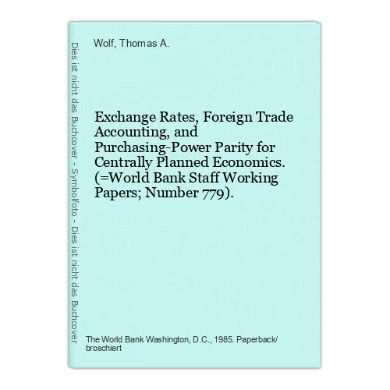
It entails reviewing each transaction, comparing it with the corresponding bank statement entry, and making any necessary adjustments to ensure the accuracy of the records. This crucial process begins with gathering the bank statements and transactions from the relevant accounts. Once the data is collected, the next step is to compare the transactions recorded in QuickBooks with those listed in the bank statements, addressing any discrepancies.
Mark Transactions as Cleared
- When matching transactions, it’s important to compare each entry on your bank statement with the corresponding records in QuickBooks Online, paying close attention to dates and transaction details.
- For instance, if a check issued by the company has not been cashed, it would show up in the company’s records but not on the bank statement.
- Accessing the reconcile window in QuickBooks Desktop is the initial step in the reconciliation process, enabling users to match the financial records with the bank statement and ensure accuracy.
- This process is vital in verifying that the records in QuickBooks accurately reflect a business’s financial transactions.
- It is commonly used in banking (to reconcile a checkbook with a bank statement), in businesses (to reconcile revenue or expenses), and in personal finance management.
Adjustments may be necessary to rectify any inconsistencies and ensure that the financial records accurately reflect the actual bank activity. Whether you’re using QuickBooks Online or QuickBooks Desktop, understanding the process of reconciliation is crucial for ensuring the accuracy and integrity of your financial records. In this comprehensive guide, we’ll walk you through the step-by-step process of reconciling your accounts, including bank statements and balance sheet accounts. This step involves accessing the ‘Reconcile’ feature, selecting the appropriate account, and entering the closing balance provided by the bank. By doing so, it helps in detecting any discrepancies between the company’s records and the bank statement, thereby ensuring the accuracy of financial data.

By reconciling transactions, users can confidently rely on the accuracy of their financial reports, ensuring that each transaction has been properly accounted for and is consistent with the bank statement. Reconciling previous months in QuickBooks Online involves the process of retroactively matching the financial records with the bank statements for specific past periods to ensure comprehensive financial accuracy. Linking your bank and credit card accounts to online banking allows for the automatic downloading of transactions and entry of the opening balance into QuickBooks Online. This article guides users through the detailed steps on how to reconcile in QuickBooks Online and QuickBooks Desktop, ensuring their financial data aligns seamlessly with bank and credit card statements. From preparing your documents to troubleshooting common reconciliation issues, we will offer practical tips, clear instructions, and insightful advice to make the process as straightforward and effective as possible. Reconciling a bank account in QuickBooks Desktop involves a series of structured procedures to ensure the accurate alignment of the financial records with the bank statement, reflecting the precise financial position.
What’s a reconciliation?
To see all of your adjustments on the list, you can review a Previous Reconciliation report for the reconciliation you adjusted. This will show you cleared transactions and any changes made after the transaction that may not show in your discrepancies. To reconcile, simply compare the list of transactions on your bank statement with what’s in QuickBooks.
How to Reconcile in QuickBooks Desktop?
It is commonly used in banking (to reconcile a checkbook with a bank statement), in businesses (to reconcile revenue or expenses), and in personal finance management. This crucial feature can be accessed by navigating to the ‘Banking’ menu and selecting the ‘Reconcile’ option. Once within the reconcile window, users can input the bank statement date, ending balance, and begin matching transactions. The significance of this phase lies in its ability to identify any discrepancies or three-way matching errors, providing a clear overview of the company’s financial status. Then, input the closing balance from the bank statement and ensure that all transactions are accurately reflected. This process is essential for maintaining accurate financial information and ensuring that the company’s records are in line with its actual financial position.
When matching transactions, it’s important to compare each entry on your bank statement with the corresponding records in QuickBooks Online, paying close attention to dates and transaction details. If quickbooks online 2021 a transaction matches, mark it as reconciled by placing a checkmark next to its amount in QuickBooks Online. Transactions added or matched from online banking are usually pre-selected for convenience.
If you would like to streamline your reconciliation process in QuickBooks, Synder is the answer. Synder is a comprehensive financial management software that cost of debt formula specializes in automating accounting processes for businesses, particularly those operating in ecommerce and using online payment platforms. Comparing transactions in QuickBooks with the bank statement is essential to identify any disparities and ensure the accurate alignment of financial records with the official bank records.
This essential tool can be accessed by navigating to the ‘Accounting’ menu, followed by ‘Reconcile.’ Once in the reconcile module, users can select the appropriate account and statement date for reconciliation. The reconcile tool offers functionalities such as matching transactions, flagging discrepancies, and providing a clear overview of the financial alignment between the records and the bank statement. Completing the reconciliation process in QuickBooks involves finalizing the matching of transactions, ensuring that the financial records align with the bank statement, and concluding the reconciliation task. It is crucial to ensure that all the transactions listed on the bank statement are accurately recorded in QuickBooks to maintain an accurate representation of the company’s financial status. By meticulously collecting and inputting this data, discrepancies can be identified and resolved promptly, preventing potential errors in financial reporting. Reconciling a bank statement in QuickBooks involves a series of steps to ensure that the recorded financial transactions align accurately with the bank statement, reflecting the true financial position.
Also, consider timing differences, such as checks that have been issued but not yet cashed, or bank fees that have yet to be recorded in QuickBooks. Utilizing the various tools within the reconcile window, such as filters and search functions, further streamlines the process for a comprehensive reconciliation. With its ability to integrate seamlessly into QuickBooks, reconciliation streamlines the financial management process, ensuring compliance and transparency. This lets you write a check or enter a bill to pay to cover the outstanding balance. Since all of your transaction info comes directly from your bank, reconciling should be a breeze.
